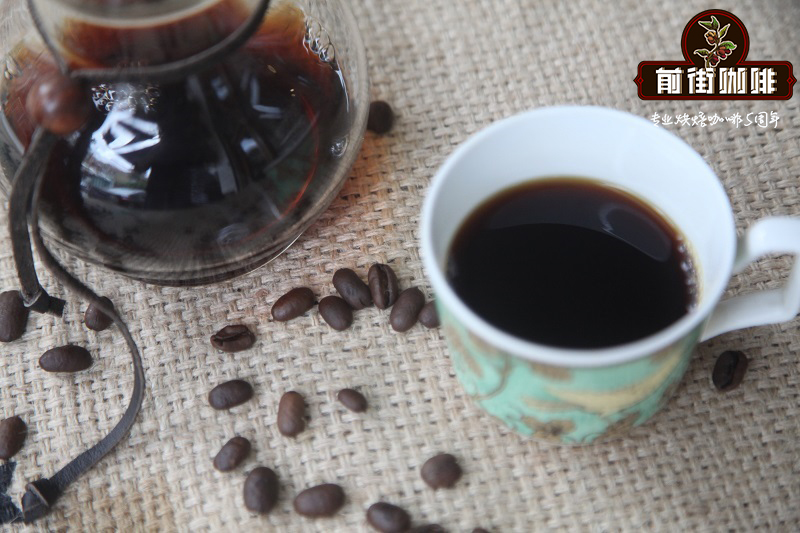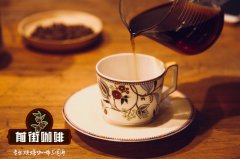What are the types of coffee beans? is Arabica coffee beans expensive?

Professional coffee knowledge exchange More coffee bean information Please pay attention to coffee workshop (Weixin Official Accounts cafe_style)
Qianjie-Introduction to the three major varieties of coffee beans
Coffee trees are only suitable for planting in tropical or subtropical areas, and today coffee native species include Arabica, Robusta and Liberica.
Arabica
Originated in Ethiopia, accounting for about 70% of the world's total output, tropical and subtropical high-altitude crops, so not resistant to high temperature and dryness, excessive humidity or low temperature frost damage, long growth period, beans fruiting, small particles.
Robusta
Robusta is a variety found in Congo, Africa. It grows at low altitude, resistant to diseases, tolerant to high temperatures and grows in wet and rainy conditions. Moreover, it has obvious "three highs" characteristics: high bitterness, high caffeine, high aroma, but its aroma is slightly more musty, but after deep roasting, Robusta will present a special burnt aroma.
Most manufacturers use Robusta, so iced coffee is high bitter will add sugar, add creamer, but high caffeine is not removed, may be related to high levels of chlorogenic acid, so many people drink will produce palpitations, discomfort, sleep well phenomenon.
Liberica
It has a strong reproductive ability, but its flavor is not good. Another disadvantage is that it will get leaf rust, so it is difficult to survive in the market. It is generally used in research and cannot be planted in large quantities. Libilika beans can be used to mask their poor flavor with a darker roast.
Arabica coffee's excellent flavor and aroma make it the only coffee of these native species that can be drunk directly and alone, such as Jamaica Blue Mountain, Indonesian Mandrine, Yerba Coffee and Brazilian Coffee. However, its resistance to drought, frost, diseases and insect pests is weak, especially leaf rust, the biggest natural enemy of coffee, so all producing countries are committed to improving varieties.
Arabica coffee is grown under harsh conditions, first of all, it requires a high altitude of 600 to 2000 meters above sea level; second, it requires fertile soil, sufficient moisture, annual rainfall of no less than 1500ml, and suitable growth temperature; at the same time, Arabica coffee trees are less resistant to pests and diseases and are vulnerable to damage. As a result, the annual yield of coffee trees per unit area is lower than that of other coffee varieties. That's why high-quality Arabica doesn't come cheap!
Knowledge development: "Arabica" coffee bean fruit is oval, generally two slightly flat beans, beans small and round, obverse oval, narrow and curved in the middle of the crack S, beans on the back of the arc shape is more flat.
In brief: Qianjie is a coffee research center, happy to share knowledge about coffee with everyone, we share it without reservation only to let more friends fall in love with coffee, and there will be 3 low discount coffee activities every month, because Qianjie wants to let more friends drink the best coffee at the lowest price, which is also the purpose of Qianjie for 6 years!
END
Important Notice :
前街咖啡 FrontStreet Coffee has moved to new addredd:
FrontStreet Coffee Address: 315,Donghua East Road,GuangZhou
Tel:020 38364473
- Prev

Introduction of three varieties of coffee beans is Arabica coffee sour
Professional coffee knowledge exchange more coffee bean information please follow the coffee workshop (Wechat official account cafe_style) front street-introduction to the three major varieties of coffee beans Arabica species (Arabica) Arabica species originating in the Ethiopian Plateau, originally used as medicine, formed the habit of baking in the 13th century, until it was introduced into Europe through Arabia in the 16th century and became popular throughout
- Next

Salvadoran coffee harvest time what is the taste of Salvadoran coffee by hand
Professional coffee knowledge exchange more coffee bean information please follow the coffee workshop (Wechat official account cafe_style) El Borbollon (Apaneca Ilamatepec)-the El Salvador Alvarez family has grown coffee in El Salvador for more than 100 years and has gone through four generations. Their award-winning farm is located on the lush green hills of Santa Ana in the west of the country.
Related
- Beginners will see the "Coffee pull flower" guide!
- What is the difference between ice blog purified milk and ordinary milk coffee?
- Why is the Philippines the largest producer of crops in Liberia?
- For coffee extraction, should the fine powder be retained?
- How does extracted espresso fill pressed powder? How much strength does it take to press the powder?
- How to make jasmine cold extract coffee? Is the jasmine + latte good?
- Will this little toy really make the coffee taste better? How does Lily Drip affect coffee extraction?
- Will the action of slapping the filter cup also affect coffee extraction?
- What's the difference between powder-to-water ratio and powder-to-liquid ratio?
- What is the Ethiopian local species? What does it have to do with Heirloom native species?

